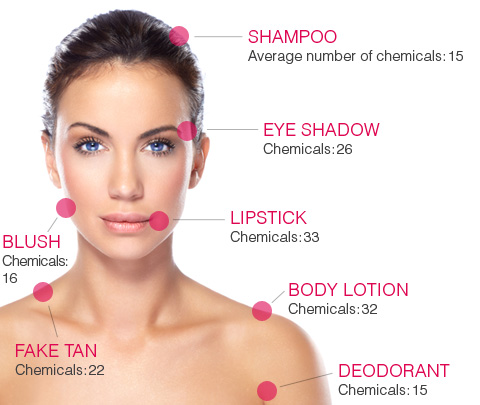Toxic Cosmetics: The Beauty you Should Avoid
But, if you stop to think about it, there are dangerous chemicals elsewhere in our lives! The cosmetics we use on a daily basis can be just as dangerous – if not more! – to our health than processed heavily sprayed food. Adults absorb 60% of the chemicals we put on our skin; and when it comes to babies, the number can go up to 100%! Plus, they have higher risk of developing diseases later in life if exposed to certain toxins. The health issues that are most commonly liked to toxic chemicals that humans consume (eating, drinking or through absorption) are learning disabilities, skin allergies, infertility, birth defects, reproductive problems and even cancer! As you can see, there are a lot of reproductive-related issues linked to the chemicals we consume, and most of the toxins responsible for that are found in cosmetics! That happens because many of the chemicals used in the beauty/ toiletries industry cause hormonal disruption. Now, this is not only affecting woman around the world. Make up is filled with chemicals, trendy beauty and health care products are as well. But so is your toothpaste and even the soap you use to wash your hands. This is really a hazard for the entire family. Those names are not always on the labels, so we have to be extra careful. The top toxins you will find (and should avoid) in cosmetics: Here is some scary information about some widely used cosmetics:
These days almost everything is packed up with chemicals and it's almost impossible to get away from them. And, if you are trying to do so, you are very likely to do it through food. Normally, when we think of being healthy and having a natural lifestyle, the first thing that comes to mind is food; natural food, organic non-processed food.



